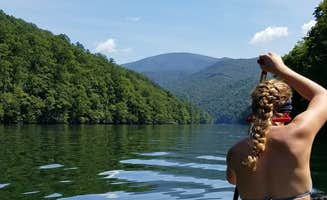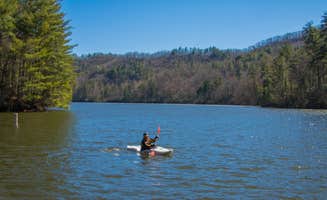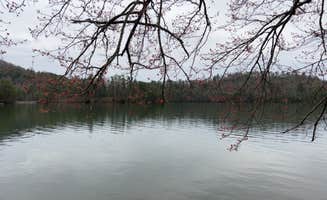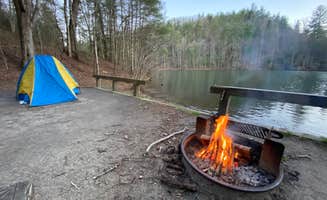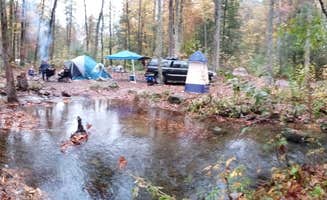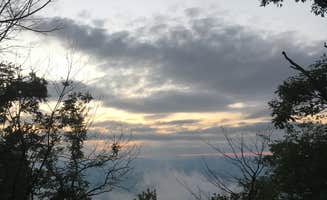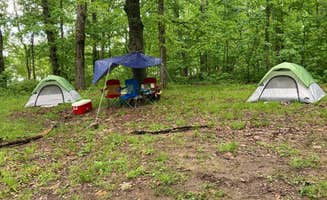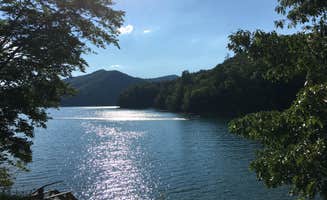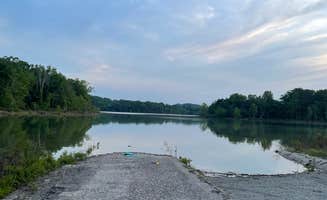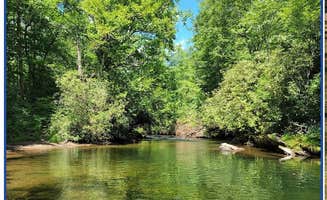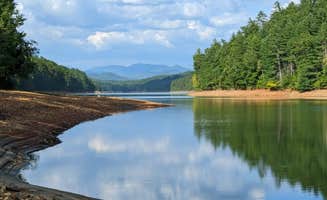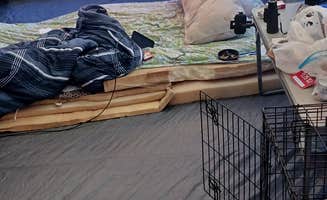Dispersed camping near Maryville, Tennessee offers multiple primitive sites across elevations ranging from 800 to 2,500 feet in the Cherokee National Forest. Weather patterns vary significantly by season with summer temperatures averaging 85°F and winter dropping to 30°F. During spring and fall, campers can expect frequent afternoon thunderstorms that create challenging conditions on unpaved forest roads.
What to do
Fishing opportunities: At Lost Creek Campground, the creek provides excellent trout fishing. "Super quiet when we were there in March. Many places to explore on bike or hiking. Super remote area," notes Chris D. The campground sits alongside a small creek perfect for shallow water wading or fishing.
Hiking trails: Access the Benton McKaye trail directly from Lost Creek. As Brittany S. describes, the trail runs "directly beside it" with "easy creek access" from most sites. The surrounding forest provides numerous day hikes ranging from 1-7 miles in difficulty.
Swimming spots: Lake Santeetlah Dispersed offers swimming in crystal-clear water. "My dog absolutely loved how much space she had to roam around and how clear the water was, excellent for swimming," states Robert W. The lake maintains comfortable swimming temperatures from late May through September.
What campers like
Privacy between sites: Citico Creek Area provides well-spaced camping locations. "These campsites are extremely spread out, allowing for private camping," writes Zane P. Most sites sit directly along the creek with natural vegetation creating barriers between neighbors.
Free amenities: Many sites at Lake Santeetlah have unexpected features despite no cost. "Included in the site were a fire ring with cooking grate, picnic table, lantern pole, grill, lots of wood on the ground for fires, and trees to hang hammocks from," reports Andy S. The dispersed sites maintain these features year-round.
Wildlife viewing: Early mornings provide the best wildlife spotting opportunities. "Keep your eyes out for the Tufted Titmouse, a cute little grey bird resembling a Cardinal," advises Andy S. about Lake Santeetlah. Dawn and dusk offer the best chances to see deer, turkey, and other forest animals.
What you should know
Site availability: Competition for spots increases on weekends and holidays. "We arrived at 8am and got the first campsite we saw," explains Amanda R. about Long Hungry Road Dispersed Campsites. Weekdays offer better chances at premium lakeside locations.
Variable road conditions: Access requires proper vehicles in many areas. "Just drive carefully (lots of big potholes and blind curves)," warns Kaylee D. about Long Hungry Road sites. Forest roads deteriorate significantly after heavy rains.
Trash management: Pack-out requirements apply to all sites. "I live not far from here and we camped at site #3, we picked up so much trash in and around our site that it was sad," reports Jason A. about Citico Creek. No disposal services exist at primitive sites.
Tips for camping with families
Best sites for children: Some locations provide safer settings for kids. "This is the most established dispersed campsite that I've stayed at as it has a fire circle, a grill and a picnic table," writes Amanda R. about Long Hungry Road campsites. Sites near calm water sections work best for families with young children.
Swimming safety: Water conditions vary widely across sites. At Calderwood Lake Primitive Campground, "Unlike the other sites we've seen, campsite one doesn't have any picnic tables, which is the only downside to it. You are right in the little slickrock cover with waterfalls as white noise," shares Claire K. Parents should test water depths before allowing swimming.
Educational opportunities: Nature experiences provide learning moments. "If you take it about 1.5 miles you'll reach wolfcat falls which has a big swimming hole at the bottom," continues Claire K. about Calderwood Lake. Many sites offer opportunities for identifying local plants, animals, and geological features.
Tips from RVers
Site limitations: Most dispersed areas cannot accommodate larger rigs. At Sourwood Campground, "It would absolutely NOT be a good location for a class A motorhome but maybe some of the smaller class C's could get settled in there," explains Victor S. Only certain sites work for smaller trailers under 18 feet.
Level parking: Finding flat spots presents challenges. "All of the sites had solid packed ground so it would not be hard to level whatever rig you use," notes Victor S. about Sourwood. Small camper vans and truck campers work best for most primitive sites.
Setup requirements: Prepare for different configurations based on location. "We got there late after 1pm. I was afraid that we were out of luck. But we found a nice spot right on the water," continues Victor S. RVers should bring leveling blocks, extra hoses, and portable waste tanks.


